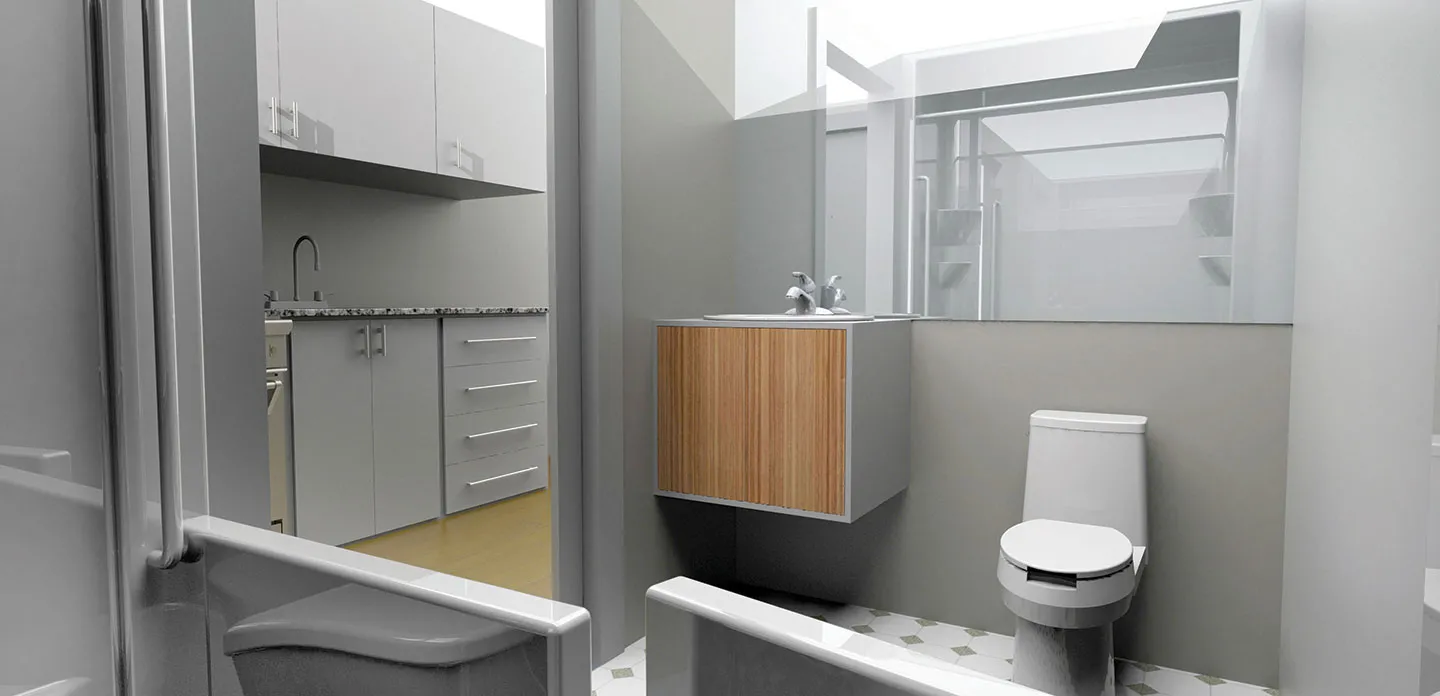Julian Bowron likes to build. From the feature stairs, large-scale public artworks, and offsite fabricated interiors that his former companies produced, to the high-end architectural fabrication and building systems supplied by Vector Praxis, Inc.—the company he founded in 2011—Bowron has always had a knack for identifying the most efficient, successful, and cost-effective way to build something. Today, Vector Praxis works on an extraordinary range of projects, providing architectural fabrication and construction services that utilize multimaterial, multiprocess skill sets. The company has experience working with a variety of materials and methods—from heavy structural steel to finely crafted stainless steel, structural glass, composites, stone, wood, lighting, and electronic systems. The key to the company’s success is the one-of-a-kind tooling and fixtures required to execute unique work. These are built in the company’s fabricating shop in extensive collaboration with owners, architects, commercial fabricators, and general contractors to bring to fruition construction projects that face myriad challenges. President Bowron’s previous experience with design tools used by the other companies that he founded—including the transition from AutoCAD® 2D drawing software to the SOLIDWORKS 3D design platform in 1999—made him very aware of the benefits of using SOLIDWORKS to support architectural fabrication and design at Vector Praxis. “Designing in 2D, which was the way everyone worked many years ago, was tedious and inefficient,” Bowron explains. “I very quickly understood the benefits of working in 3D because of the obvious improvements in visualization. The ability to clearly see an issue in 3D, solve the problem, and effectively communicate manufacturing solutions was like a revelation. Combined with the ability to leverage 3D for FEA [finite element analysis] and manufacturing provided additional productivity gains. By transitioning to SOLIDWORKS 3D, our productivity rapidly outstripped our competitors.” That’s why Vector Praxis has utilized the SOLIDWORKS 3D design platform—including installations of SOLIDWORKS Premium design, SOLIDWORKS Simulation Premium analysis, and SOLIDWORKS Enterprise PDM product data management (PDM) software—from its founding, because the solutions are easy to use, provide integrated capabilities that increase efficiency, facilitate communication through enhanced design visualization, and help the company accelerate development. The company recently added SOLIDWORKS Composer™ technical communication software to support design reviews, sales and marketing activities, and erection and assembly instructions. “SOLIDWORKS 3D design software stands out from the rest and is the most popular, widely used CAD tool in the Toronto area,” Bowron adds. “Because SOLIDWORKS is so well known, we were able to attract talent, build a workforce, and get up and running very quickly.”
Better Way to Construct Tall Buildings
Using SOLIDWORKS solutions, Vector Praxis developed and introduced the VectorBloc modular construction system, an innovative cast-steel connector for hollow structural section (HSS) construction, which supports the erection of steel buildings more quickly and affordably. Inspired by the ISO corners used to build ocean freight containers and endorsed by leaders in the modular and steel fabrication industries, the VectorBloc system has multiple features that make it ideal for the fabrication of offsite-completed modules, which then stack and bolt together to create fully braced buildings of almost any conceivable shape. VectorBloc applications include offsite construction of residential buildings, data centers, energy plants, and chemical facilities. “The VectorBloc system represents a revolutionary approach to HSS-based steel building construction because it combines tight tolerances and modularity in the construction of tall buildings,” Bowron notes. “Using SOLIDWORKS design configuration, FEA, and visualization capabilities proved to be critically important to helping us develop this system quickly and cost-effectively.”
